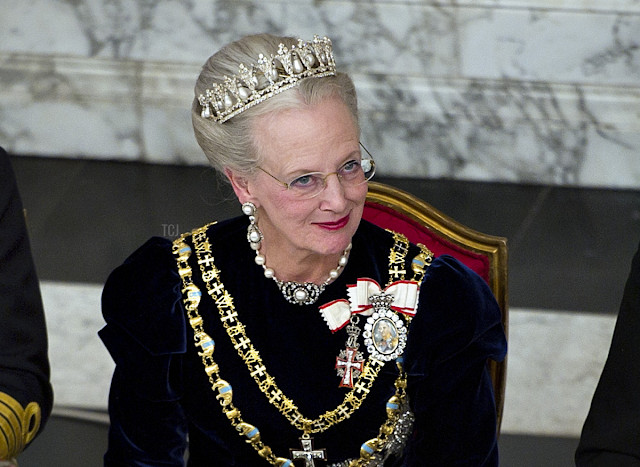On December 31, Queen Margarethe II of Denmark announced that she would abdicate her throne on January 14 after serving as a queen for 52 years. She said that she would be succeeded by her eldest son, Crown Prince Frederik. She made this surprise announcement on live TV during her traditional New Year’s Eve speech, which was viewed by many in the country of 5.9 million people.
The 83-year-old queen ascended the throne back in 1972. On September 20, 2022, she became the longest-serving monarch in Europe following the death of Britain’s Queen Elizabeth II. This year, in July, she became the longest-sitting monarch that has ever existed in Denmark’s history.
In Denmark, formal power resides with the elected parliament and the government that it has formed. The monarch is expected to stay above partisan politics and represent the nation with traditional duties, which range from state visits to national day celebrations.
Why is Queen Margarethe II’s reign important in the history of Denmark?

Image Credit: Wikipedia
Queen Margarethe, previously known as Princess Margrethe, was born on April 16, 1940. She was the first child of King Frederik IX and Queen Ingrid. She later had two younger sisters, Benedikte in 1944 and Princess Anne-Marie in 1946.
When Queen Margarethe was born, Denmark’s law only allowed males to ascend the throne of Denmark. It was due to the changes in succession laws that were enacted in the 1850s that the Glücksburg branch was chosen to succeed the throne. At that time, it was assumed that Prince Knud, who was the uncle of Princess Margaret, would one day assume the throne, as she had no brothers.
However, in 1947, changes in the constitution began taking place. When Frederik IX became king, the popularity of his and his daughters among the people of the country further acted as a catalyst for altering the constitution.
On March 27, 1953, after being passed by two successive Parliaments and then by a referendum, a new law was passed in the country of Denmark. It was the new Act of Succession that permitted female succession to the throne of Denmark. However, according to male-preference cognate primogeniture, this could happen only if the female does not have a brother. After this announcement, Princess Margrethe became the presumed heir. In 2009, this law of succession was modified into absolute primogeniture in the country.
On Margaret’s eighteenth birthday, April 16, 1958, she was given a seat in the Council of State and subsequently made responsible for chairing the meetings of the Council in the absence of the King. In 1960, together with the princesses of Sweden and Norway, she travelled as a representative of her country to several places.
In 1972, Margrethe succeeded to the throne at the age of 31, after her father and the king at the time fell sick after delivering his New Year’s Address to the Nation. She became the first female Danish sovereign under this new Act of Succession. On January 15, 1972, she was proclaimed the Queen from the balcony of Christiansborg Palace by Jens Otto Krag, the Prime Minister back then.
Queen Margaret’s Marriage and Family:

Image Credit: Wikipedia
Queen Margarethe was married to Henri-Marie-Jean-André de Laborde de Monpezat, whom she met in London, where he was present as a French diplomat. Their engagement was announced on October 5, 1966, and they got married on June 10, 1967. They were married for over fifty years until he passed away on February 13, 2018. She gave birth to her first son, Frederik, on May 26, 1968, and her second son, Joachim, on June 7, 1969.
Why did Queen Margarethe II abdicate her throne?

Image Credit: Reuters
On December 31, in her New Year’s Eve speech broadcast on Danish television, Margarethe announced her abdication in an address.
Margrethe, who is now 83, said that in two weeks she will become Queen of Denmark, who has been on the throne for 52 years. She said that this long time has left a mark on her, but as she grows older, her physical ailments are taking a toll on her body. She said that she may not be able to perform and manage her duties as she did in the past. She referred to her extensive back surgery, which took place back in February 2023, and said that though it was successful, it gave her thoughts that this would be an appropriate time to pass on her responsibilities to the next generation.
After this, she announced that she had decided to step down as the ‘Queen of Denmark’ and hand over her throne to her son, Crown Prince Frederik.
What was the reaction in Denmark after this announcement?
After this announcement, Denmark’s present Prime Minister, Mette Frederiksen, thanked the queen for her lifelong dedication to duty and her country.
She said in a statement that this change will be difficult to understand, referring to the long reign of the Queen and how several people in the country would have difficulty processing this change.
She said that Queen Margrethe has been the epitome of Denmark and, throughout the years, has put words and feelings into what Denmark means as its people and as a nation.



